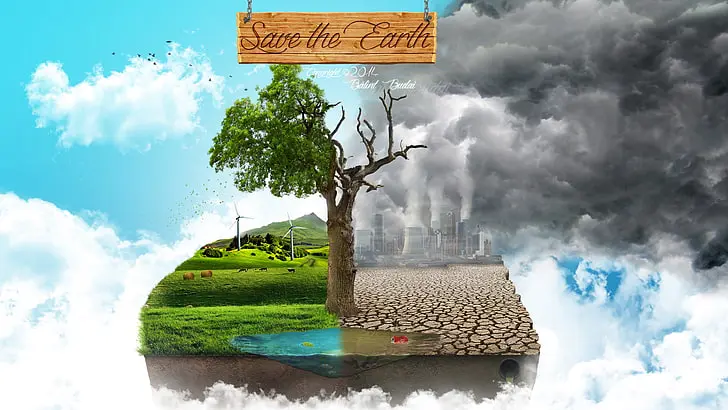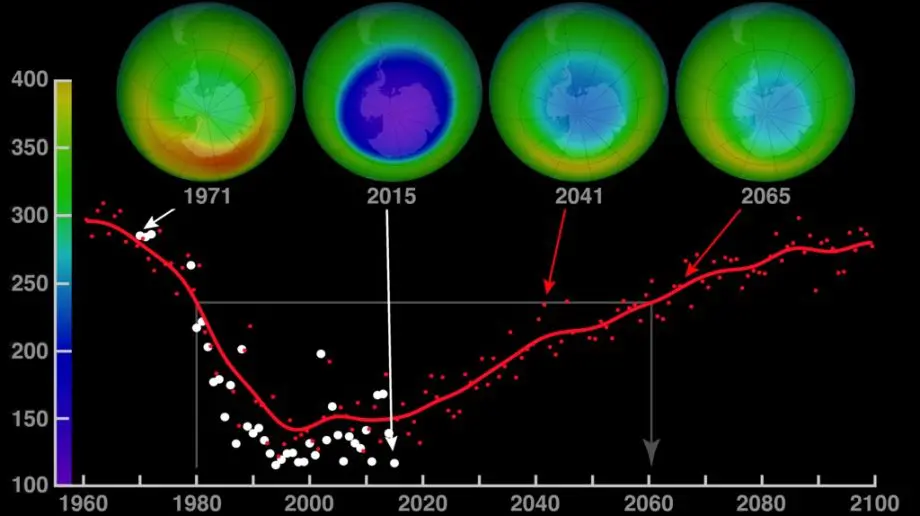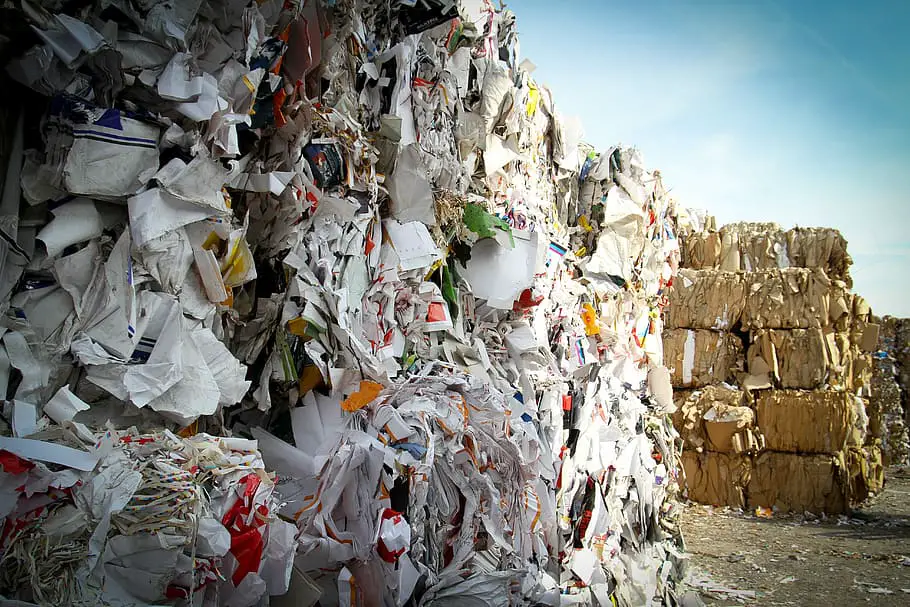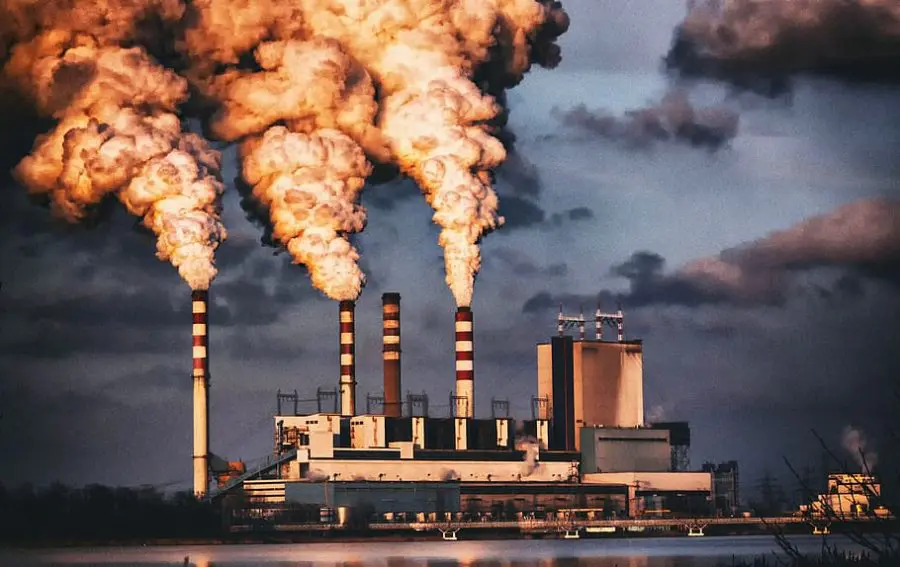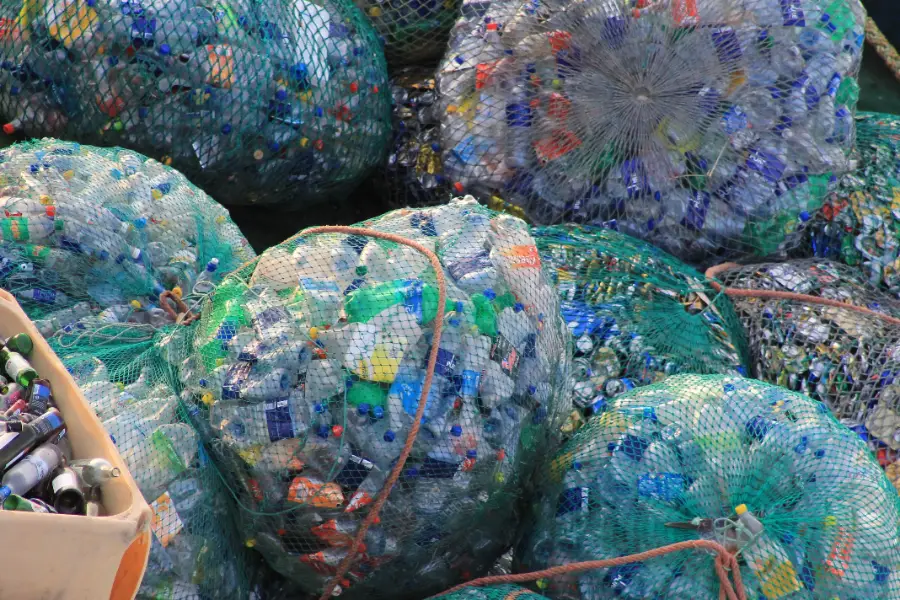
Does Recycling Help Global Warming? Explore the impact of recycling on our planet. Discover how your recycling habits can help combat climate change.
Ever found yourself pondering, ‘Does Recycling Help Global Warming?’ Well, you’re not alone.
It’s a question that’s been on the minds of many as we navigate through the challenges of climate change.
In this post, we’ll delve into the world of recycling, exploring its impact on global warming, and how our everyday choices can make a significant difference.
So, let’s embark on this enlightening journey together!
Does Recycling Help Global Warming?
Does Recycling Help Global Warming? In this post, we’re going to dive deep into this topic, exploring the ins and outs of recycling, its effects on global warming, and the role we all play in this.
We’ll also tackle some common misconceptions about recycling, discuss its limitations, and share some effective recycling practices.
So, buckle up and get ready for an informative ride into the world of recycling and its impact on our planet!
Brief Overview of Global Warming and Recycling
Global warming, a long-term rise in the average temperature of the Earth’s climate system, is a major aspect of climate change.
It’s primarily caused by human activities, particularly the burning of fossil fuels and deforestation, which increase the concentration of greenhouse gases in the atmosphere.
This leads to a rise in global temperatures, causing a host of environmental issues, including melting ice caps, rising sea levels, and more frequent extreme weather events.
Now, let’s talk about recycling. It’s a process that involves converting waste materials into reusable materials and objects.
From paper and glass to plastic and metal, a wide range of materials can be recycled.
The recycling process not only reduces the amount of waste that ends up in our landfills but also minimizes the need for extracting and processing raw materials, which are often energy-intensive activities.
The Relevance of Recycling in the Context of Global Warming
So, how does recycling fit into the picture of global warming? Well, it’s quite significant.
When we recycle, we reduce the need for extracting, refining and processing raw materials, all of which produce substantial amounts of greenhouse gases.
Moreover, recycling saves energy compared to manufacturing products from virgin materials.
For instance, recycling aluminum cans saves 95% of the energy needed to produce new ones from raw materials.
Furthermore, recycling reduces the amount of waste that ends up in landfills.
As waste decomposes in landfills, it releases methane, a potent greenhouse gas that contributes to global warming.
By recycling more, we can reduce methane emissions from landfills.
In essence, recycling is a powerful tool in our fight against global warming.
It’s a practical, effective way for each of us to reduce our carbon footprint and contribute to a more sustainable future.
Understanding Recycling
Let’s shift gears and dive into the world of recycling.
If you’ve ever wondered about the journey your plastic bottle takes after you toss it into the recycling bin, or why it’s so important to separate your paper and plastic, you’re in the right place.
In this section, we’re going to demystify recycling, breaking down what it is, how it works, and the types of materials that can be recycled.
So, let’s roll up our sleeves and get a closer look at the fascinating process of recycling!
Definition of Recycling
Let’s start with the basics. What exactly is recycling? In simple terms, recycling is the process of converting waste materials into new products.
It’s a way of extending the life of items we use every day, from newspapers and soda cans to plastic bottles and cardboard boxes.
Instead of tossing these items into the trash, we give them a new lease on life through recycling.
The Process of Recycling
Now, let’s take a peek behind the curtain and see how recycling works.
The process begins with the collection. This could be curbside pickup, drop-off centers, or deposit programs.
Once collected, recyclables are sorted and cleaned to remove any non-recyclable materials.
They are then processed and transformed into raw materials that can be used to manufacture new products.
For example, old newspapers might be turned into recycled paper, or used plastic bottles could be transformed into carpet fiber.
It’s a cycle that keeps materials in use and out of our landfills.
Types of Materials that Can be Recycled
You might be surprised to learn just how many different types of materials can be recycled.
Paper, glass, metal, and plastic are the big ones, but that’s just the tip of the iceberg.
Cardboard, certain types of food packaging, and even some electronics can also be recycled.
It’s important to note, however, that not all materials are recyclable everywhere.
Local recycling programs may vary, so it’s always a good idea to check with your local waste management facility to see what they accept. Remember, when in doubt, find out!
The Impact of Recycling on Global Warming
Alright, now that we’ve got a handle on what recycling is and how it works, let’s delve into the heart of the matter, the impact of recycling on global warming.
It’s a topic that’s been the subject of much debate and research. Does recycling really make a difference in the fight against climate change?
How does turning an old newspaper into recycled paper help our planet?
In this section, we’re going to explore these questions and more, shedding light on the crucial role recycling plays in mitigating global warming.
So, let’s dive in and uncover the connection between your recycling bin and the health of our planet!
How Recycling Reduces Greenhouse Gas Emissions
Let’s start with the big question: how does recycling reduce greenhouse gas emissions?
Well, it all comes down to energy. When we recycle, we use less energy than when we produce goods from raw, virgin materials.
This is because extracting and processing raw materials requires a lot of energy, which often comes from burning fossil fuels.
These activities release a significant amount of greenhouse gases into the atmosphere.
By contrast, recycling uses less energy, which means fewer greenhouse gases are emitted.
For instance, recycling aluminum cans saves about 95% of the energy needed to produce new ones from raw materials. That’s a significant reduction in greenhouse gas emissions!
The Role of Recycling in Conserving Natural Resources
Recycling also plays a crucial role in conserving natural resources. When we recycle, we reduce the need for extracting raw materials.
This not only preserves our natural resources but also protects the habitats of countless species.
For example, recycling paper reduces the need for logging, which helps maintain forests and the biodiversity within them.
Similarly, recycling metals means less mining, which can have devastating effects on local ecosystems.
Case Studies Showing the Impact of Recycling on Global Warming
There are numerous case studies that highlight the impact of recycling on global warming.
For instance, a study by the Environmental Protection Agency (EPA) found that recycling activities in the U.S. in 2018 resulted in an annual reduction of over 186 million metric tons of carbon dioxide equivalent emissions.
That’s equivalent to the annual emissions from more than 39 million passenger vehicles!
Another study published in the journal Science Advances found that recycling could reduce the amount of plastic entering our oceans by up to 31% by 2040.
This is significant because plastic waste in oceans can absorb and emit greenhouse gases, contributing to global warming.
These case studies underscore the significant role recycling plays in combating global warming.
Common Misconceptions about Recycling
Let’s face it, recycling can be a bit of a puzzle. With different rules in different places and a whole host of materials to deal with, it’s no wonder there are a few misconceptions floating around.
In this section, we’re going to tackle some of these common myths head-on.
We’ll clarify what can and can’t be recycled and debunk some of the misunderstandings that often lead to ‘wish-cycling’ the well-intentioned but misguided practice of tossing non-recyclable items into the recycling bin.
So, let’s clear up the confusion and get the facts straight on recycling!
Debunking Myths about Recycling
Let’s start by busting some common myths about recycling. One of the most prevalent misconceptions is that all plastics can be recycled.
While it’s true that most plastics are technically recyclable, not all of them can be recycled in every community.
The recycling capabilities can vary greatly depending on local facilities and market demand for recycled material.
Another common myth is the idea that recycling is a cure-all solution for waste.
While recycling is a crucial part of waste management, it’s not the only solution.
It’s equally important to reduce and reuse wherever possible. Remember, recycling is just one part of the larger waste management picture.
Clarifying What Can and Can Not Be Recycled
Now, let’s clarify what can and cannot be recycled. Generally, paper, cardboard, metal cans, and certain types of plastic and glass can be recycled.
However, not all items within these categories are recyclable. For example, paper towels, plastic bags, and certain types of glass (like window glass and light bulbs) often cannot be recycled through curbside programs.
It’s also important to note that recycling rules can vary by location. What’s recyclable in one city may not be in another.
That’s why it’s always a good idea to check with your local recycling program to see what they accept.
Remember, when it comes to recycling, it’s better to be sure than to wish-cycle. When in doubt, find out!
The Limitations of Recycling
As much as we’d love for recycling to be the silver bullet solution to our waste problems, it’s important to acknowledge that it has its limitations.
In this section, we’re going to take an honest look at the challenges and limitations of recycling.
From the complexities of the recycling process to the issue of ‘wish-cycling’, we’ll delve into the less glamorous side of recycling.
But don’t worry, it’s not all doom and gloom. Understanding these limitations can help us find ways to improve and make our recycling efforts even more effective.
So, let’s dive in and explore the other side of the recycling coin!
Challenges in the Recycling Process
Recycling, while beneficial, is not without its challenges. One of the main hurdles is contamination.
This happens when non-recyclable items or dirty recyclables are mixed in with clean recyclables.
Contamination can render a whole batch of recyclables unprocessable, meaning they end up in landfillas instead.
Another challenge is the complexity of the recycling process.
Different materials require different recycling processes, and some materials, like plastic, are more difficult and costly to recycle than others.
Additionally, the market for recycled materials can fluctuate, making it economically challenging for recycling programs to operate.
The Issue of Wish-cycling and Its Impact
Now, let’s talk about wish-cycling. This is when people toss items into the recycling bin in the hope that they’re recyclable, even if they’re not sure.
While the intention is good, wish-cycling can cause more harm than good.
Non-recyclable items can contaminate recyclable materials, disrupt the recycling process, and even damage recycling equipment.
The impact of wish-cycling is significant. It increases the cost of recycling, reduces the quality of recycled materials, and can lead to recyclable items ending up in the landfill.
That’s why it’s so important to know what can and cannot be recycled in your local area. When it comes to recycling, knowledge truly is power!
How to Recycle Effectively
Alright, we’ve talked about what recycling is, its impact on global warming, and even its limitations.
But how can we, as individuals, recycle effectively? In this section, we’re going to share some best practices for recycling, both at home and in the community.
We’ll also emphasize the importance of the ‘Three R’s’ – Reduce, Reuse, and Recycle and how they can guide our actions towards more sustainable living.
So, if you’re ready to step up your recycling game and make a positive impact on our planet, let’s dive in!
Best Practices for Recycling at Home and in the Community
Let’s start with some best practices for recycling at home and in the community.
First and foremost, it’s important to know what can and cannot be recycled in your local area.
Check with your local waste management facility or look up your city’s recycling guidelines online.
Once you know what can be recycled, make sure to clean your recyclables.
Rinse out containers, jars, and bottles to remove food residue. This helps prevent contamination, which can disrupt the recycling process.
Another good practice is to separate your recyclables. While some communities offer single-stream recycling (where all recyclables go into one bin), others require you to separate paper, plastic, glass, and metal.
Following your community’s guidelines will ensure your recyclables actually get recycled.
The Importance of Reducing and Reusing Before Recycling
While recycling is important, it’s just one part of the waste management hierarchy known as the Three R’s: Reduce, Reuse, and Recycle.
This hierarchy is a guide to sustainable living, with each step being more effective at reducing waste than the last.
Reducing means using less in the first place. This could be as simple as choosing a reusable water bottle over a disposable one or opting for products with less packaging.
Reusing, the second step, involves finding a new purpose for an item instead of throwing it away. For example, you could use glass jars for storage or turn an old t-shirt into a cleaning rag.
Recycling comes last after we’ve done our best to reduce and reuse. It’s a way to give waste a new life, but it’s not a catch-all solution.
By focusing on reducing and reusing first, we can significantly cut down on the amount of waste we produce and make our recycling efforts even more effective.
The Future of Recycling
As we look towards the future, it’s clear that recycling will continue to play a pivotal role in our efforts to combat global warming.
But what does the future of recycling look like? In this section, we’re going to explore the exciting innovations in recycling technology and the role of policy and legislation in promoting recycling.
From advancements in sorting and processing technology to new laws encouraging sustainable practices, the future of recycling is a fascinating frontier.
So, let’s take a glimpse into what’s on the horizon for recycling!
Innovations in Recycling Technology
The world of recycling is constantly evolving, with new technologies being developed to make the process more efficient and effective.
For instance, advanced sorting technologies are being used to separate recyclables more accurately, reducing contamination and increasing the quality of recycled materials.
Another exciting innovation is the development of new recycling processes for materials that were previously difficult to recycle.
For example, scientists are working on ways to recycle complex materials like multi-layered packaging and certain types of plastics.
These advancements could significantly increase the amount of waste we can recycle.
The Role of Policy and Legislation in Promoting Recycling
Policy and legislation also play a crucial role in promoting recycling. Governments around the world are implementing policies to encourage recycling and reduce waste.
These can include regulations on waste management, incentives for recycling, and targets for reducing waste.
For example, some cities have implemented zero-waste policies, aiming to divert the majority of their waste from landfills through recycling and composting.
Other places have introduced extended producer responsibility laws, which require manufacturers to manage the waste generated by their products.
These policies and laws are crucial for promoting recycling and moving us toward a more sustainable future.
They not only encourage individuals and businesses to recycle, but they also drive innovation in the recycling industry.
Does Recycling Help Global Warming FAQs
Got questions about recycling and global warming? You’re not alone! In this section, we’re going to tackle some of the most frequently asked questions on the topic.
From the impact of recycling on global warming to the effectiveness of the ‘Three R’s’, we’ve got you covered. So, let’s dive into these FAQs and quench our thirst for knowledge!
Q: How much does recycling reduce global warming?
A: Recycling significantly reduces global warming by decreasing the amount of greenhouse gases emitted during the production of new products.
While it’s difficult to quantify the exact impact, it’s estimated that recycling activities in the U.S. alone result in an annual reduction of over 186 million metric tons of carbon dioxide equivalent emissions.
Q: Does recycling actually help the environment?
A: Absolutely! Recycling helps the environment in several ways.
It reduces the need for extracting and processing raw materials, which can be harmful to ecosystems.
It also reduces the amount of waste that ends up in landfills, where it can generate methane, a potent greenhouse gas.
Q: How much CO2 is saved by recycling?
A: The amount of CO2 saved by recycling can vary greatly depending on the material being recycled. For instance, recycling aluminum saves about 95% of greenhouse gas emissions compared to producing new aluminum from raw materials.
Q: What are the 3 R’s of climate change?
A: The 3 R’s of climate change are Reduce, Reuse, and Recycle. These actions can help mitigate climate change by reducing the amount of waste we produce and the energy we use.
Q: What are some disadvantages of recycling?
A: While recycling has many benefits, it also has some disadvantages.
These include the cost and complexity of the recycling process, the issue of contamination, and the fact that not all materials can be recycled.
It’s also important to remember that recycling is not a catch-all solution and should be complemented with efforts to reduce and reuse.
Q: How effective are the 3Rs?
A: The 3Rs (Reduce, Reuse, Recycle) are highly effective strategies for managing waste and mitigating climate change.
By reducing consumption, reusing items, and recycling waste, we can significantly decrease the amount of waste we produce and the greenhouse gas emissions associated with waste management and the production of new goods.
Does Recycling Help Global Warming Final Thoughts
As we wrap up our deep dive into the world of recycling and its impact on global warming, it’s time to reflect on what we’ve learned.
In this final section, we’ll recap the importance of recycling in combating global warming and offer some thoughts on how we can all contribute to this effort.
We’ll also share a call to action for all of us to improve our recycling habits.
So, let’s take a moment to ponder on our journey so far and look ahead to the positive changes we can make for our planet!
Recap of the Importance of Recycling in Combating Global Warming
As we’ve explored throughout this post, recycling plays a crucial role in combating global warming.
By recycling, we reduce the amount of greenhouse gases emitted during the production of new products and the decomposition of waste in landfills.
We also conserve natural resources and protect ecosystems from the harmful effects of extraction and processing.
In essence, recycling is a practical, effective way for each of us to reduce our carbon footprint and contribute to a more sustainable future.
Call to Action for Readers to Improve Their Recycling Habits
Now, it’s over to you. Armed with this knowledge, we can all make a difference in the fight against global warming by improving our recycling habits.
Start by learning what can and cannot be recycled in your local area. Make sure to clean your recyclables to prevent contamination. And remember the hierarchy of the Three R’s: Reduce, Reuse, and Recycle.
But don’t stop there. Share what you’ve learned with others. Encourage your friends, family, and community to recycle.
Advocate for policies that promote recycling and sustainability. Together, we can make a significant impact on our planet’s health. So, let’s get started!

